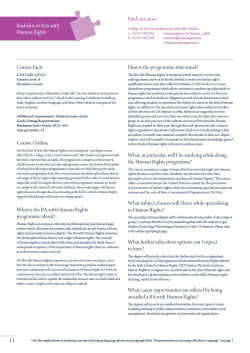
IRELAND - Gallipoli
IRELAND 1914—1918 EXPLORING THE IRISH EXPERIENCE NLI WWI LEARNING RESOURCES Junior Cert worksheet A series of Learning Objectives has been developed for all visitors to the exhibition. These include specific objectives designed to link to the Leaving Cert History Syllabus: EXHIBITION OBJECTIVE CURRICULUM LINKS INCLUDE Realise that WWI involved, and had a huge impact on, millions of Irish people Topic: Social change in the 20th century (changing lifestyles in Ireland) Realise that the war had a profound impact on the lives of women, in an equal variety of ways to that which it had on men Be challenged to think about what your response would have been to WWI Topic: Political developments in Ireland in the late 19th century and the 20th century Learn that the NLI collection contains material that can help us understand the Irish Experience in WWI The job of the historian – methods, evidence reading original source material (Topic: Introduction) Throughout the exhibition you and your students will find sources, text, images, objects and interactive elements which have selected to help achieve the objectives. IRELAND 1914—1918 EXPLORING THE IRISH EXPERIENCE NAME: NLI WWI LEARNING RESOURCES Junior Cert worksheet SCHOOL: WHEN YOU VISIT THE NATIONAL LIBRARY Welcome to World War I – Exploring the Irish Experience. In this exhibition you’ll find out about how the War affected Ireland and what it was like for Irish people with different backgrounds and beliefs. You can complete the questions in any order, so if it’s a bit busy at one part of the exhibition, you might like to try a different question and come back when its quieter. A GLOBAL WAR Irish people faced conflicting messages about what to do in response to World War I. The government produced posters and articles to encourage Irish people to join the army and support the war effort. Republicans, some Trade Unionists and others tried to persuade people to do the opposite, and stay out of the war. reasons why you think the British Army 1 List wanted to recruit soldiers from Ireland: reasons why you think others opposed 2 List Irish people getting involved in the war: FRONT LINE LIVES & A MODERN WAR New technologies made World War I different from previous conflicts. some of the images in the ‘A Modern War’ 3the Watch slideshow and read ‘Front line lives’. Think about following inventions and write down what effect you think they had on the conflict. MACHINE GUNS POISON GAS RAILWAYS there any other technologies you can see in 4but Are the exhibition which were important in the war, which aren’t listed above? Write them here: LIFE AT HOME The war had different impacts for people in cities and in the countryside. Explore the ‘Life at Home’ touchscreen and read ‘The War at home’ and ‘The War and Everyday Life’. some of the different 5 List impacts the war had in each: CITY COUNTRYSIDE do you think these differences occurred 6 Why between cities and the countryside? MUSIC AND WORDS year, the National Library organises a poetry 7someEvery speaking competition called Poetry Aloud. We asked past winners to read poems written during World War One. Find the listening post and listen to the poems. Which do you like best? WHY 100 YEARS AGO one of the events that are described in 8(theChoose the area to the right of the projected slideshow corner nearest the windows). Imagine you are a reporter on the scene. Prepare a short newspaper headline and report (100 words altogether) describing what happened: POSTERS Have a look at the ‘Road to War’ (the screen to the 9section. left of the world map) and the ‘Challenging choices’ Examine how the different posters shown make their case for and against the war. Now use the space over the page to design a poster either supporting or opposing the war. You might wish to use some of these elements to help you: POSTERS / BLOCK TYPE / SHORT STRAPLINES / IMAGES OF WAR STRONG COLOURS / APPEALS TO NATIONAL IDENTITY / QUOTES FROM KEY PEOPLE PATRIOTIC SYMBOLS / APPEALS TO BELIEFS AND VALUES / IMAGES OF IRELAND THANK YOU! WE HOPE YOU ENJOYED VISITING THE NATIONAL LIBRARY.
© Copyright 2025





















